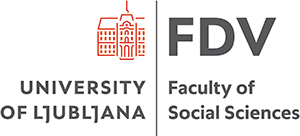In the 1KA application in the 'EDIT' - 'Settings' - 'Basic info' - 'Language settings' tab you can customize language at three levels:
- Under 'Language for survey editors' you can set the basic language of 1KA applications for authors. You can choose between English and Slovene.
- You can set the 'Basic language for respondents' from the drop-down menu. This means that the standard words (eg. 'Next Page') are automatically translated into the selected language.
- Survey authors also have advanced language settings: by clicking on the 'Survey translations’ you have additional options of language, where you can translate your basic questionnaire into different languages. In this case, the data is stored in a single database, each language, however, has its own URL which can be separately promoted in different languages (eg. Countries). Optionally, respondents can also choose a language from the drop-down menu at the beginning of the survey. Translations and advanced settings are only available to users of the 2KA and 3KA private packages.
Support in terms of pre-prepared standard words (eg. Forward, backward, Introduction, etc.) is prepared for the following languages:
- for level 1 Slovenian and English languages are supported,
- for levels 2 and 3, practically all European languages (43 languages) are supported, for the Hebrew language right-to-left option is enabled.
1KA also supports all fonts (Cyrillic, Greek, Chinese, etc.), however in other languages, standard words need to be manually set.
In group work (e.g. international projects) it is wise to use settings where partner organizations (or a translator) have access only to translations (but cannot ruin the basic questionnaire):
- we add editors in the tab 'EDIT' - 'Settings' - 'Editor access';
- then enter e-mail addresses in the 'Add users that can edit survey' field and click on 'Grant access and send notifications';
- under 'Users with access to survey', click on the pencil icon next to the name of the user to whom you want to restrict access;
- we tick off the tabs we wish they couldn’t see;
- under 'Passive users that can translate survey into approved languages' we select the languages we want them to be able to edit.
Translating questionnaires into different languages:
- By clicking on the 'Survey translations’ (in the 'EDIT' - 'Settings' - 'Basic info' - 'Language settings' tab) a new window will open, where you can translate your basic questionnaire into different languages. To do this, use the drop-down list, select the language in which you want to translate the questionnaire, and then click the 'Add new language’. In a parallel window, the basic version of the questionnaire will show as well as the version for translation. Parallel view allows you to easily translate the questionnaire.
- You can add multiple translations; each translation is then edited by clicking on the language that you want to edit in the ‘Additional language for respondents’ category.
- Under 'Language settings', 'Allow respondents to change survey language' you can specify whether the respondents can select the language themselves, or you specify it. In the event that the respondent chooses the language, you can send the same questionnaire to different target populations and the language choice will be the first question in the survey. Also, if the respondent chooses the language, you can set the display format of the language question: you can choose between the radio button and dropdown menu.
Some of the functionalities described are only available for users of the 2KA and 3KA packages for individuals, and for users of the business packages for groups.



